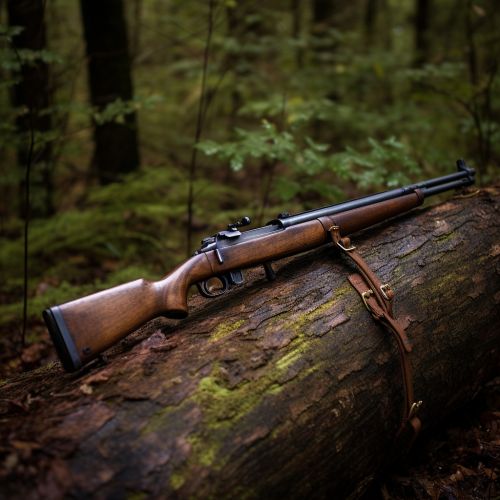Karabiner 98k
Introduction
The Karabiner 98k was a bolt-action rifle that was adopted as the standard service rifle by the German Wehrmacht in 1935. It was one of the final developments in the long line of Mauser military rifles. Although supplemented by semi- and fully automatic rifles during World War II, it remained the primary German service rifle until the end of the war in 1945.
Design and Features
The Karabiner 98k is a controlled-feed bolt-action rifle based on the Mauser M 98 system. Its internal magazine can be loaded with five 7.92×57mm Mauser cartridges from a stripper clip or one-by-one. The straight bolt handle found on the Gewehr 98 bolt was replaced by a turned-down bolt handle on the Karabiner 98k. This change made it easier to rapidly operate the bolt, reduced the amount the handle projected beyond the receiver, and enabled mounting of aiming optics directly above the receiver on the Karabiner 98k.
Production
The Karabiner 98k was produced by numerous manufacturers, both German and foreign, during and after World War II. The main German manufacturers were the Mauser Werke AG and the Berlin-Lübecker Maschinenfabrik. The production started in 1935 and ended in 1945, with an approximate production of 14.6 million rifles.
Service History
The Karabiner 98k served as the standard service rifle of the German military from its adoption in 1935 until the end of World War II. It saw action in every theatre of war involving German forces, including occupied Europe, North Africa, the Soviet Union, Finland, and Norway. After the war, it was used by various armed forces around the world, including the French Foreign Legion and the Israeli Defense Forces.
Variants
Several variants of the Karabiner 98k were produced during its service life, including sniper versions, training rifles, and simplified versions produced towards the end of World War II. The sniper versions were fitted with a variety of optical sights such as the Zeiss Zielvier 4× (ZF39) telescopic sight which used 1-inch-diameter (25.4 mm) steel tube, reticle 1 (a single post that ends in a sharp point at the top and horizontal tapered bars on the lower sides of the field of view), and could be adjusted for ranges of up to 800 m by setting the elevation drum located on the turret.
Post-War Use
After World War II, the Karabiner 98k was used by several countries, including Israel, who used it during the 1948 Arab-Israeli War. It was also used by various paramilitary and irregular forces, and has seen use in conflicts as recent as the Yugoslav Wars of the 1990s.
Legacy
The Karabiner 98k has left a lasting legacy and is regarded as one of the best bolt-action rifles ever made. Its design has influenced many other bolt-action rifles that came after it, including the American M24 Sniper Weapon System.


